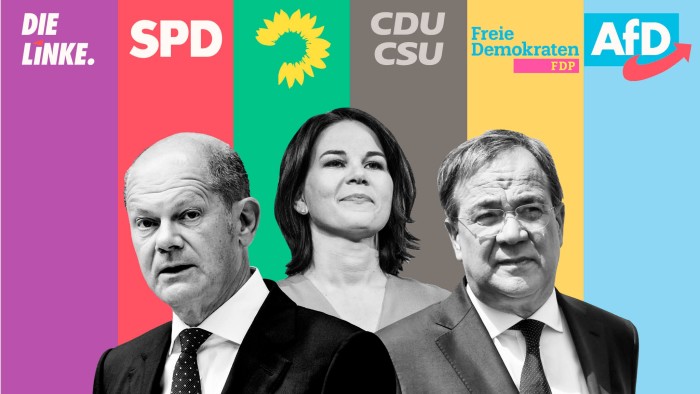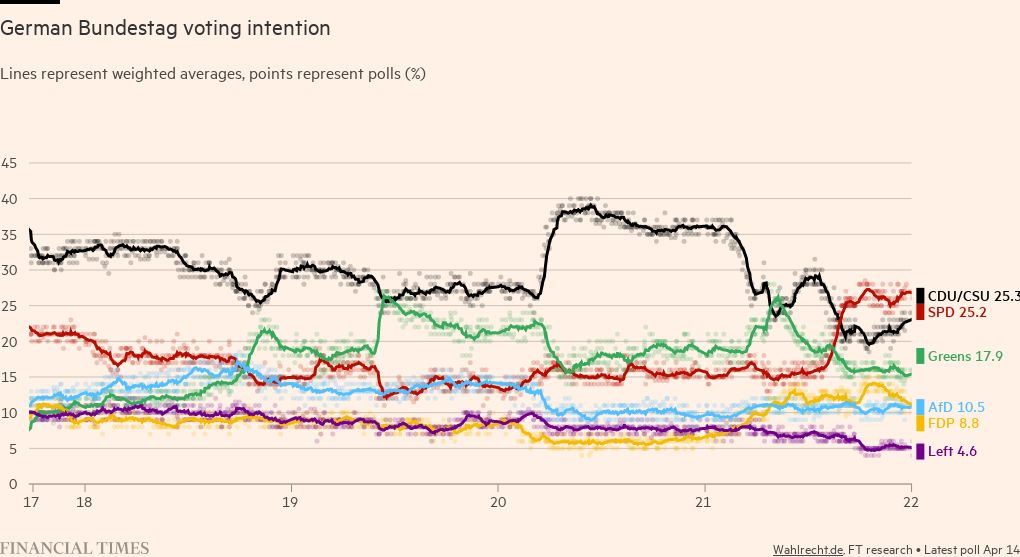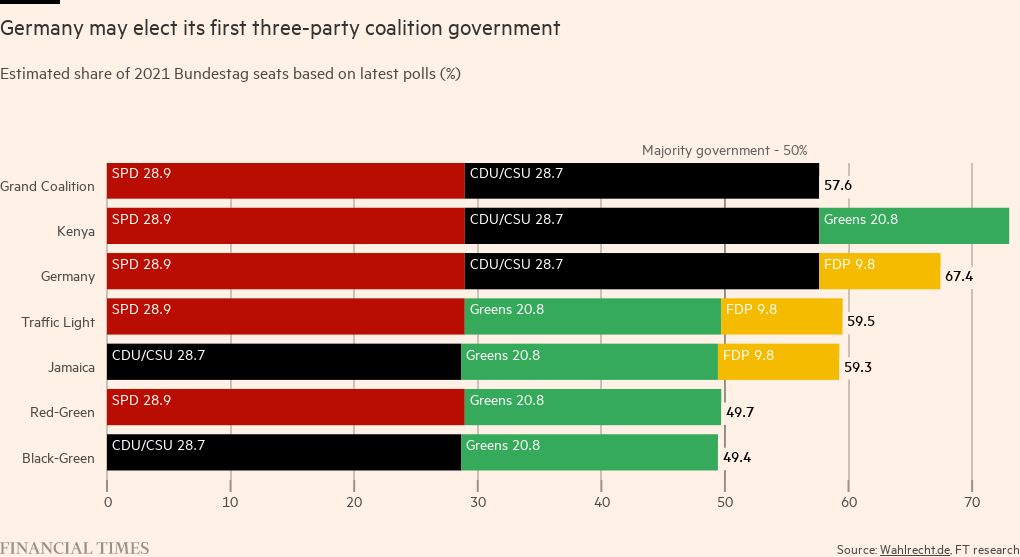Germany poll tracker: the race to succeed Angela Merkel

Roula Khalaf, Editor of the FT, selects her favourite stories in this weekly newsletter.
The German federal election on September 26 will determine who will succeed Angela Merkel after her 16 years as chancellor.
The FT is tracking opinion polls about voting intentions ahead of the election, which will mark the start of a new political era in Europe’s biggest economy.
Polls suggest that Merkel’s centre-right CDU/CSU bloc has been overtaken in the final weeks of the campaign by its coalition partner in the outgoing government, the centre-left Social Democrats (SPD).
SPD finance minister Olaf Scholz enjoys the highest approval ratings of the three candidates for chancellor and his party has opened a widening lead in voting intention polls.
Armin Laschet, the beleaguered CDU candidate for chancellor, is seeking to revive his campaign. Barring a late reversal, the party that has ruled Germany for 50 of the past 70 years appears to be headed for its worst-ever electoral result and could be out of power for the first time since 2005. Members of the group have stepped up attacks on SPD policies in the final weeks of the campaign.
After a strong start, the Greens and Annalena Baerbock, their first-ever candidate for chancellor, are now in third place. Still, they could nearly double their share of the vote from the 2017 election and play a kingmaker role in forming the next government.
That may be even more likely given the resurgence of support for the pro-business liberal Free Democrats. If sustained, this would create new options for a governing coalition in which Christian Lindner, leader of the fiscally conservative party, could become Germany’s next finance minister.
Possible coalitions
Although a renewed “Grand Coalition” of the SPD and CDU-CSU remains a possibility, Germany is more likely to be heading towards its first three-party Federal government.
German coalitions are often described in terms of the participating parties’ traditional colours, or after nations whose flags share them. Possible combinations include:
‘Traffic Light’: The most likely option for a government without CDU/CSU ministers would be a red-amber-green pact between SPD, Greens and FDP. But Lindner has set strict conditions for the FDP joining such a coalition.
‘Red-Red-Green’: In what may have been her final Bundestag speech, Merkel implored voters not to enable a leftwing government of the Greens, SPD and Linke (Left). Scholz has not explicitly ruled out working with the hard-left party, but has said he would only form a coalition with parties committed to Nato.
‘Jamaica’: If it manages to overcome the SPD’s lead in the final two weeks, or talks to form an SPD-led coalition fail, a CDU/CSU-led government could still emerge with the support of the Greens and FDP. Talks to form a black-green-yellow government of this type broke down following the 2017 election.
‘Germany’: A black, red and yellow government would see the FDP join the CDU/CSU and SPD government.
Sources and methods
This FT poll of polls includes the most recent voting intention poll from eight pollsters, as compiled by Wahlrecht.de. The average of their results is weighted to give more recent polls greater influence.
The coalition calculation is based on a projected share of Bundestag seats. This is based on the most recent poll average, excluding parties falling below the 5 per cent threshold of the vote needed to gain seats in the parliament. For the remaining parties, this results in a larger share of parliamentary seats than its national vote share as measured by polls.
Based in part on a previous version by Anna Leach


Comments